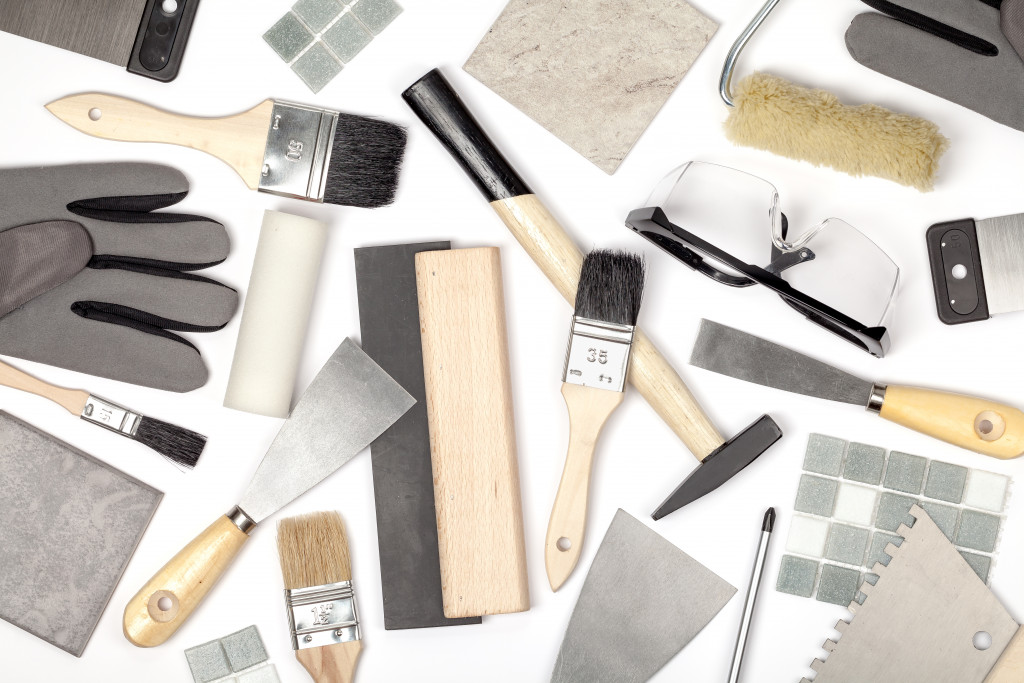As part of our annual assessment, we were able to identify numerous recurrent features and ideas in terms of equipment, plans, and functionalities in the architectural projects released in 2020.
Because the architectural sector develops at a somewhat slower pace than others, we discovered that many elements in design and construction stacking up over the years had made powerful statements this 2020. The dedication to environmental development and sustainable design is shared by the architectural trends for 2020 and 2021. As a social expression, society as a whole is moving toward ecological efforts and architectural styles.
The use of recyclables, self-sufficient structures, and environmentally friendly installations of all sorts is becoming increasingly common. However, there are other architectural trends that we will discuss below.
Finding Rustic Beauty in Exposure
Exposed structural beams may be seen in a variety of modern eateries, breweries, and workplaces. Exposed beams open up a building’s interior, giving a contemporary and industrial appearance. The industrial style is now highly trendy in many business settings.
Architectural style exposed steel structure can drastically convey a building’s structural stability, putting the system design in the spotlight. Aside from aesthetic considerations, exposing structural steel allows transparency into a room while acknowledging the structural element of the structure. By not concealing a system up, exposing steel frame offers a simple design, educates the public on how buildings function, and saves money.
Architects and engineers attract attention to the structure itself by utilizing exposed structural columns. Using a pre-engineered metal structure, for instance, may offer designers a functional and cost-effective alternative since the necessary altitudes and clear expanses can be accomplished at a reduced cost. In this instance, Koning believes that utilizing a pre-engineered steel beam as a structural element may offer a reliable and sustainable canvas.
Embracing the Warmth of Terracota
Despite the plethora of contemporary materials available today, there is a renewed interest in organic aesthetics and organic or raw materials. This is true of clay, terracotta, terrazzo, and even cement tiles. They have the unique capacity to make a room seem lived-in, personal, and warm when used as wall coverings.
While clay and terracotta tiles are attractive due to their natural appearance, cement or terrazzo tiles may provide a warm impression. Is it feasible to employ ancient tiles as a new wall treatment if you are a fan of history and all things old — and if you want to give yourself a cause to daydream a little?
On Clé, for example, you may discover ancient terracotta tiles that have been meticulously removed from old French buildings and are ready to be utilized on new projects. Clay or terracotta tiles are ideal for outdoor settings due to their rich color and organic texture. This is particularly true in sunny regions, where they reflect light at various times of day and increase the room’s warmth. A quality limestone veneer would make an excellent alternative for a much cooler tone.
Designing with Tech

A smart home is a house that utilizes internet-connected gadgets to allow remote monitoring and control of equipment like heating and cooling systems.
The gadgets in a smart home are linked together and may be accessed via a single central point—a cellphone, iPad, computer, or gaming console. Home automation can manage locks on the doors, TVs, thermostats, home sensors, camera systems, lighting, and even objects like the refrigerator. The sensor is implemented on portable or other networked devices, and the user may choose when specific modifications should take effect.
Innovative home systems have self-learning capabilities, allowing them to understand the homeowner’s routines and make changes as required. Smart homes with lighting control will enable homeowners to decrease their power consumption and gain from energy-related cost reductions. Some home automation systems notify the homeowner if movement is detected in the house while they are away. In contrast, others may contact the authorities (policemen or fire department) in an emergency.
Innovative home technology, also known as home automation or domotics (from Latin “Domus,” which means “home”), provides homeowners with safety, convenience, simplicity, and clean energy by integrating intelligent devices, typically via an intellectual hub on their mobile phone or other online mediums. Smart home systems and gadgets, which are part of the internet of things (IoT), often work together, exchanging consumer use data and automating activities depending on the owners’ interests.
These construction industry developments are quickly transforming the worldwide market. Take a walk down almost any street, and you’ll see plenty of proof that architectural preferences and styles vary throughout time. Buildings develop from hardwood and bricks to cast-iron to concrete and steel, driven by population changes, new construction techniques, and creative expression trends.







